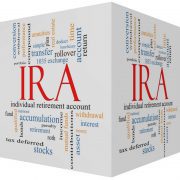Private Equity Real Estate in a Self-Directed IRA: A Better Alternative to Bonds
There is little doubt that bonds have lost their luster over the past several years. Once an integral part of a balanced portfolio, they have become riskier than many investors realize. Low interest rates and inflation have combined to result in a negative real return on bonds. And in some parts of Europe and Japan interest rates have fallen below zero percent! A Self-Directed IRA could be your answer.
If you are hoping for reliable income, less volatility, and inflation protection from your Self-Directed IRA portfolio, you should be looking beyond bonds to an investment that offers all of these advantages—private equity real estate, particularly commercial real estate.
Shielded from global risk and protected from inflation, commercial real estate investments can provide cash flow quickly and give you the security of a tangible asset, not merely a piece of paper but something (land and buildings) that you can see and touch. And real estate has shown amazing resilience, recovering quickly (and even increasing in value) after taking a stunning blow in the 2007-2009 recession that left other investments reeling for several years.
But don’t bonds provide “safety”?
Bonds have been the hallmark of safety for many years. You could put your money into Treasuries or Investment-Grade Corporate Bonds and feel safe and secure knowing that your principle will always be there. But there is a flaw in that “zero-risk” mindset: Bonds have an array of risks that many investors—both neophytes and the sophisticated—fail or choose not to acknowledge. Here are just some of them:
Interest rate risk: When interest rates rise, bond prices typically go down.
Inflation risk: If the cost of living rises suddenly, the rate of inflation could match or eclipse the interest rate on your bond, leaving you with little or no true return on your investment.
Credit risk: Corporate bonds depend on the company’s ability to repay their debt. There are no guarantees they will be able to do that.
Liquidity risk: While there is almost always a market for government bonds, corporate bonds can be hard to sell in a thin market, forcing you to take a lower price than you were expecting.
There can also be the risk that your callable bond will be called, causing you to reinvest at lower rates or that your bond may be downgraded, making it harder for you to sell it.
The case for commercial real estate
Before making a case for commercial properties, here are some examples of them:
- Office buildings
- Warehouses
- Retail buildings
- Apartments (multifamily buildings)
- Industrial buildings
- Mixed-use buildings, which could be a combination of any of the above
Like bonds, there are certain risks associated with real estate investing, but commercial real estate typically offers more financial rewards than bonds. Real estate also comes with the benefit of less volatility, holding it in stark contrast to those investments that have fallen prey to illogical buying and selling patterns and unfounded valuations.
Investors have always been counseled on the importance of having safer investments as part of a well-diversified Self-Directed IRA portfolio. That advice becomes even more critical as we get older. Typically, bonds were touted as that “prudent” investment. But modern investors realize that they can invest in commercial real estate as an alternative to bonds, thus adding diversity and spreading out the amount of risk they are taking on.
The philosophy of keeping a portion of your portfolio in lower-risk investments remains appropriate today. But the method for achieving that is now up for debate, and commercial real estate as a vehicle for safe and diverse investing is winning the debate handily.
Interested in learning more about Self-Directed IRAs? Contact American IRA, LLC at 866-7500-IRA (472) for a free consultation. Download our free guides or visit us online at www.AmericanIRA.com.






